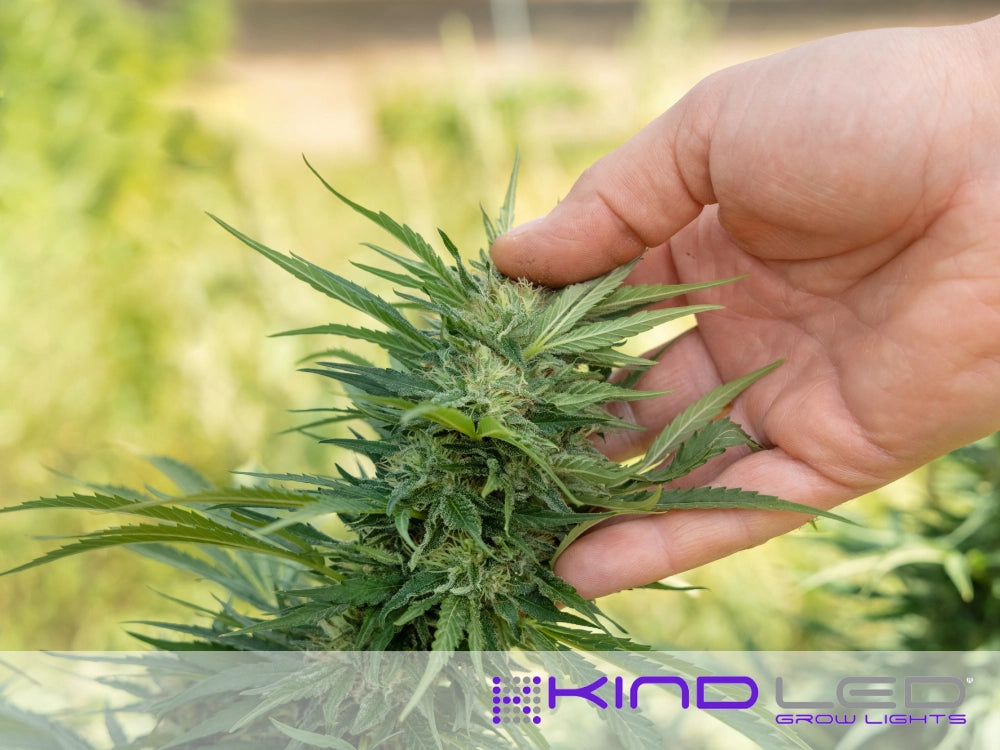A Beginner's Guide to Cultivating Cannabis

The Green Thumb Chronicles: A Beginner's Guide to Cultivating Cannabis
Cannabis cultivation has gained significant popularity in recent years, with more and more enthusiasts opting to grow their plants at home. Whether you're interested in the therapeutic benefits, the pleasure of gardening, or the satisfaction of producing your supply, cultivating cannabis can be a rewarding and fulfilling experience.
This comprehensive guide aims to provide beginners with essential knowledge and step-by-step instructions to cultivate cannabis in the comfort of their own homes successfully.
From Seed to Smoke: The Art of Cultivating Cannabis at Home
Understanding Cannabis:
Before diving into the cultivation process, it's crucial to understand the basics of cannabis. Cannabis is a versatile plant with various strains exhibiting unique growth patterns, flavors, and cannabinoid profiles. Familiarize yourself with different strains and their properties to select the right variety.
Legal Considerations
Before embarking on your cannabis cultivation journey, it's essential to familiarize yourself with the legalities in your jurisdiction. Laws regarding cannabis cultivation can vary significantly from one place to another. Ensure you comply with local regulations, obtain necessary permits, and adhere to legal possession limits.
Indoor vs. Outdoor Cultivation
Deciding between indoor and outdoor cultivation is an important choice to make. Indoor cultivation provides greater control over environmental factors like light, temperature, and humidity, allowing for year-round cultivation. On the other hand, outdoor cultivation relies on natural sunlight and provides a more cost-effective approach. Consider your available space, climate, and resources before making a decision.
Setting up the Growing Space
Creating an optimal growing environment is crucial for the success of your cannabis plants. If you choose indoor cultivation, invest in a suitable grow tent or dedicated space that can be easily controlled. Ensure proper ventilation, lighting (LED or high-intensity discharge lamps), and a reliable source of electricity. Outdoor growers should select a sunny location with well-drained soil and protection from strong winds.
Germination and Seed Selection
Start your cultivation journey by germinating cannabis seeds. Purchase seeds from reputable sources to ensure quality and viability. Several methods can be used for germination, including paper towels or directly planting seeds into pre-moistened soil cubes or pots. Provide a warm and consistent environment, maintaining proper moisture levels until the seedlings emerge.
Vegetative and Flowering Stages
Once the seedlings emerge and develop their first few sets of leaves, they enter the vegetative stage. During this phase, plants focus on foliage growth. Provide a nutrient-rich growing medium, suitable light cycles (18-24 hours of light per day), and proper irrigation to support healthy development. After a few weeks, transition the plants to the flowering stage by adjusting the light cycle to 12 hours of light and 12 hours of uninterrupted darkness. This triggers the production of flowers (buds).
Nutrient Management
Proper nutrient management is vital for healthy plant growth. Cannabis plants require essential macronutrients (nitrogen, phosphorus, potassium) and micronutrients (iron, magnesium, zinc) at different stages of growth. Choose a balanced fertilizer specifically formulated for cannabis cultivation, and follow the manufacturer's guidelines to avoid nutrient deficiencies or excesses.
Pest and Disease Control
Just like any other plant, cannabis is susceptible to pests and diseases. Regularly inspect your plants for signs of pests such as aphids, spider mites, or fungus gnats. Implement preventive measures like proper sanitation, maintaining a clean grow area, and introducing beneficial insects. Should an infestation occur, explore organic pest control methods or consider natural pest repellents.
Harvesting and Drying
Harvesting your cannabis plants at the right time is crucial to obtain desired potency and flavor. Monitor the trichomes (tiny resinous structures on the buds) using a magnifying tool. When the trichomes change from clear to milky or amber, it indicates the optimal time for harvesting. Carefully cut the plants at the base and hang them upside down in a dark, well-ventilated space to dry. Maintain an ideal temperature and humidity level to prevent mold or mildew. After a few weeks, when the branches snap instead of bending, the buds are sufficiently dried and ready for further processing.
Trimming and Curing
After drying, it's time to trim the buds to remove excess leaves and improve overall appearance. Use sharp, clean scissors to carefully trim away any unwanted plant material while preserving the integrity of the buds. Once trimmed, transfer the buds to glass jars and initiate the curing process. Curing involves placing the buds in a cool, dark place and regularly opening the jars to release excess moisture. This process enhances the buds' aroma, flavor, and potency.
Storing and Enjoying the Harvest
Once the buds are properly cured, store them in airtight containers away from light and moisture. Mason jars or specialized cannabis storage containers work well for preserving the quality of the harvest. Remember to label the containers with strain names and harvest dates for future reference.
When ready to enjoy, grind the buds and use them in various consumption methods such as smoking, vaping, or cooking.




